Category:Biology Experiments’
14 DIY Halloween Science Projects for Kids
- by KitchenPantryScientist
Turn your kitchen table into the coolest mad science lab in the neighborhood. Click on the project name for a link to instructions and to read about the “Science Behind the Fun.” Most of these projects can be found in my book “Kitchen Science Lab for Kids,” the perfect gift for any young scientist!

1. Frankenworms– Bring gummy worms to “life” using baking soda and vinegar.
2. Alien Monster Eggs– Make creepy, squishy monster eggs.
3. Oozing Monster Heads– Combine science and art to create Halloween fun.
4. Bag of Blood– Amaze your friends with this magical science trick.
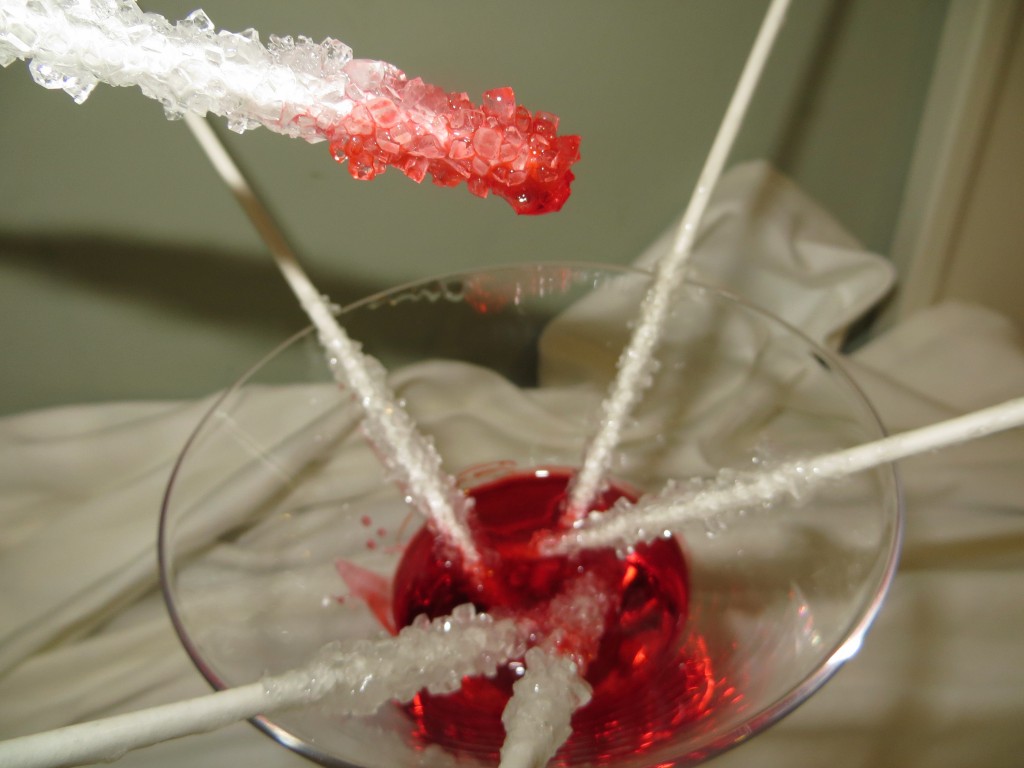
Vampire Rock Candy (kitchenpantryscientist.com)
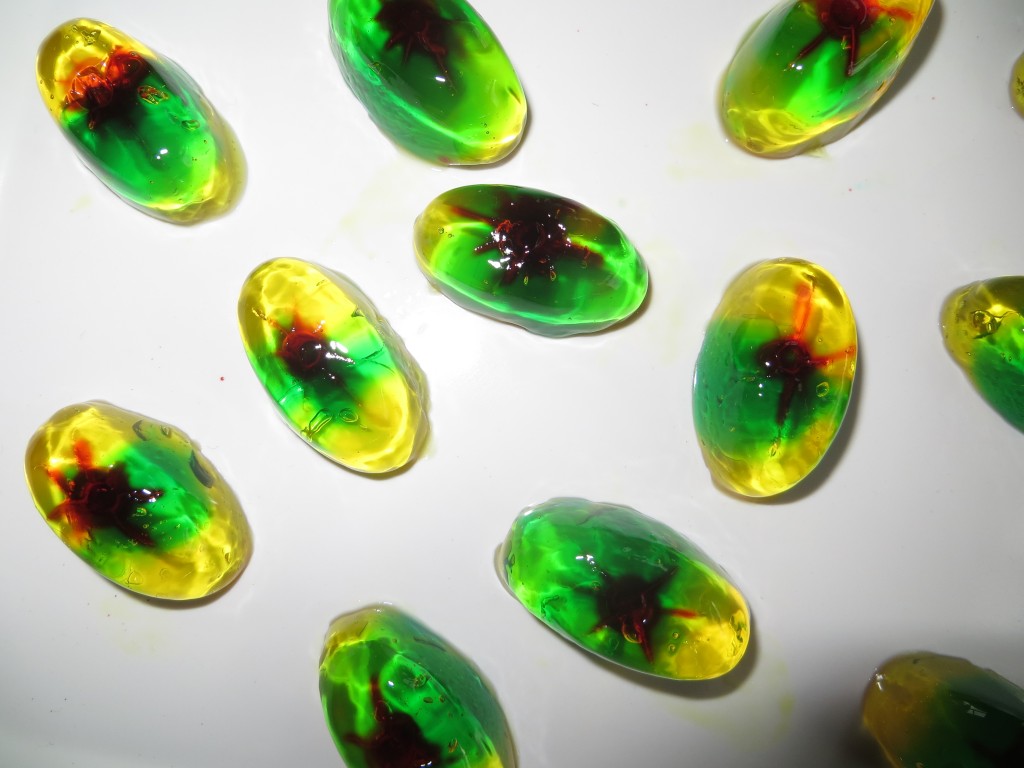
Jell-O Eyeballs
kitchenpantryscientist.com
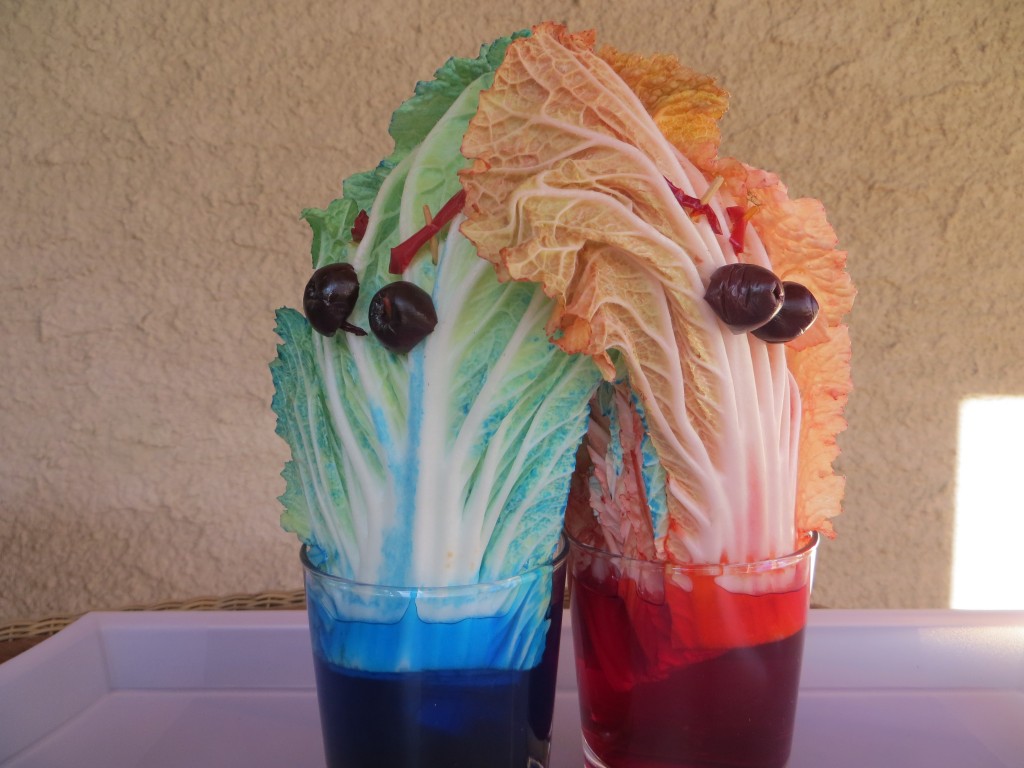
Vegetable Vampires kitchenpantryscientist.com
9. Magic Potion– Make a color-changing, foaming potion using red cabbage and water.
10. Halloween Soda Explosion– The classic Diet Coke and Mentos explosion is perfect for Halloween.
11. Foaming Alien Blood– Bring the X-Files to your kitchen with this creepy green fake blood
12. Mad Scientist’s Green Slime– Because everyone loves slime
13. Homemade Fake Blood– It’s simple to make non-toxic fake blood in your kitchen.
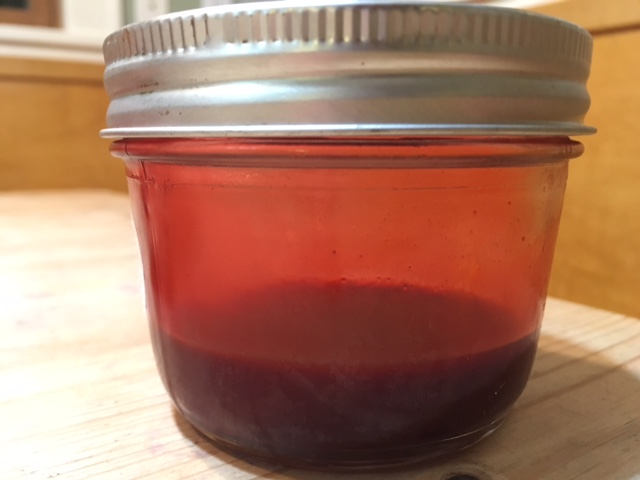
edible fake blood
14. Fizzy Balloon Ghosts– Draw scary faces on balloons and inflate them using baking soda and vinegar.
Invisible Ink
- by KitchenPantryScientist
Write secret messages using baking soda and water and make the big reveal using a bright yellow spice called turmeric!
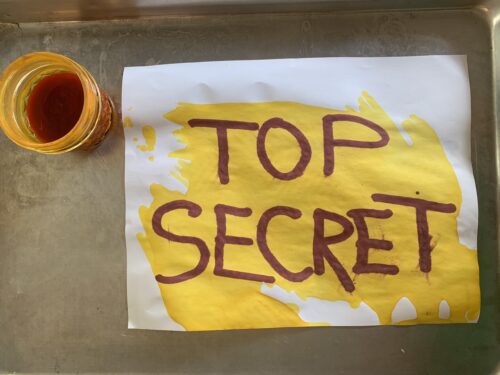
(safety note: small children should be supervised around rubbing alcohol. It is poisonous.)
You’ll need:
1 Tbsp. baking soda
1 tsp. turmeric
rubbing alcohol
cotton swabs
paper
Instructions:
For invisible ink, mix 1 Tbsp. baking soda into 1/2 cup water
For revealing paint, mix 1 tsp. turmeric into 1/2 cup rubbing alcohol (isopropanol)
- Use a cotton swab dipped in invisible ink to write a message or draw a picture on a piece of paper.
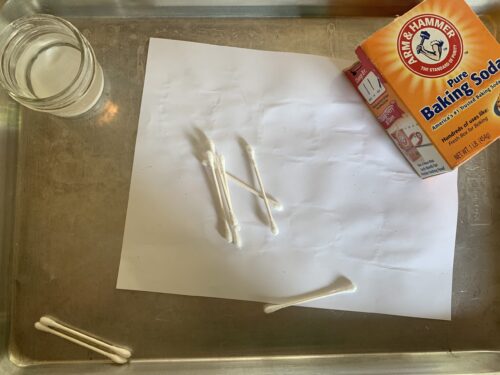
- Let the ink dry
- Use a second cotton swab dipped in revealing paint to make the message appear, as if by magic.
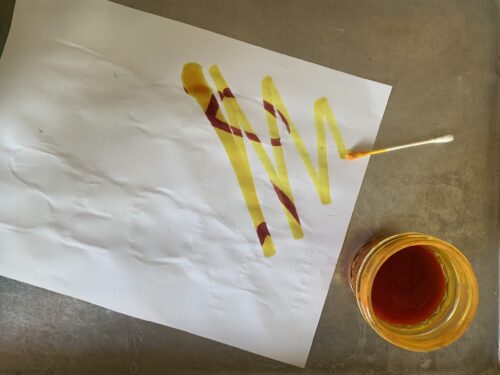
The Science Behind the Fun:
Baking soda is white, and when it dries, you can’t see it against the white paper because it is camouflaged and blends into the paper. Turmeric is a kind of chemical called an acid-base indicator that changes color depending on whether it’s in a solution with a high pH, called a base, or a solution with a low pH, called an acid. Baking soda is a base, and turns the turmeric bright red where you wrote the message. Paper has a neutral pH (isn’t an acid or a base), and the turmeric on the paper stays yellow.
Five Ways Kids Can Decorate Eggs Using Science
- by KitchenPantryScientist
It’s fun to create colorful, swirling marbled designs on eggs, and there’s science behind the fun! Here’s a brief description of each. Click on the blue titles for more instructions and science explanations.
Olive Oil Marbling: You’ll need hard boiled eggs, olive oil, vinegar, and food coloring. We used green, yellow and brown food coloring to make robin’s egg colors.
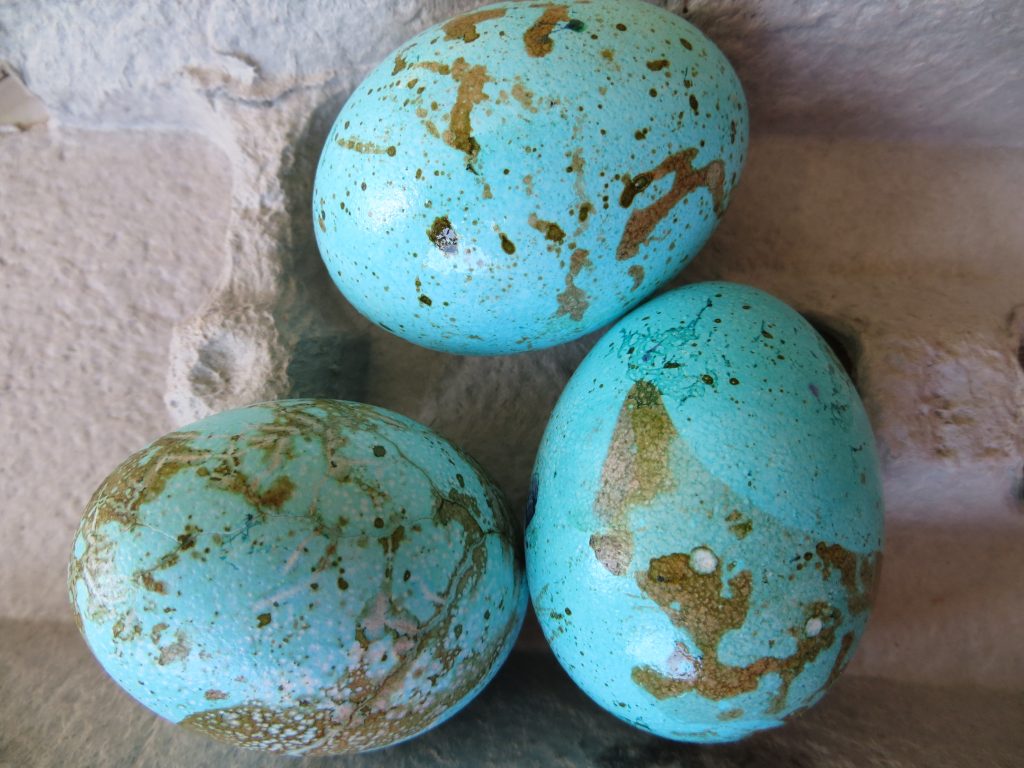
Whipped Cream Faux Marbling: You’ll need hard boiled eggs, a shallow container, cool whip or whipped cream, food coloring, and a toothpick. (Project from Star Wars Maker Lab -DK Books)
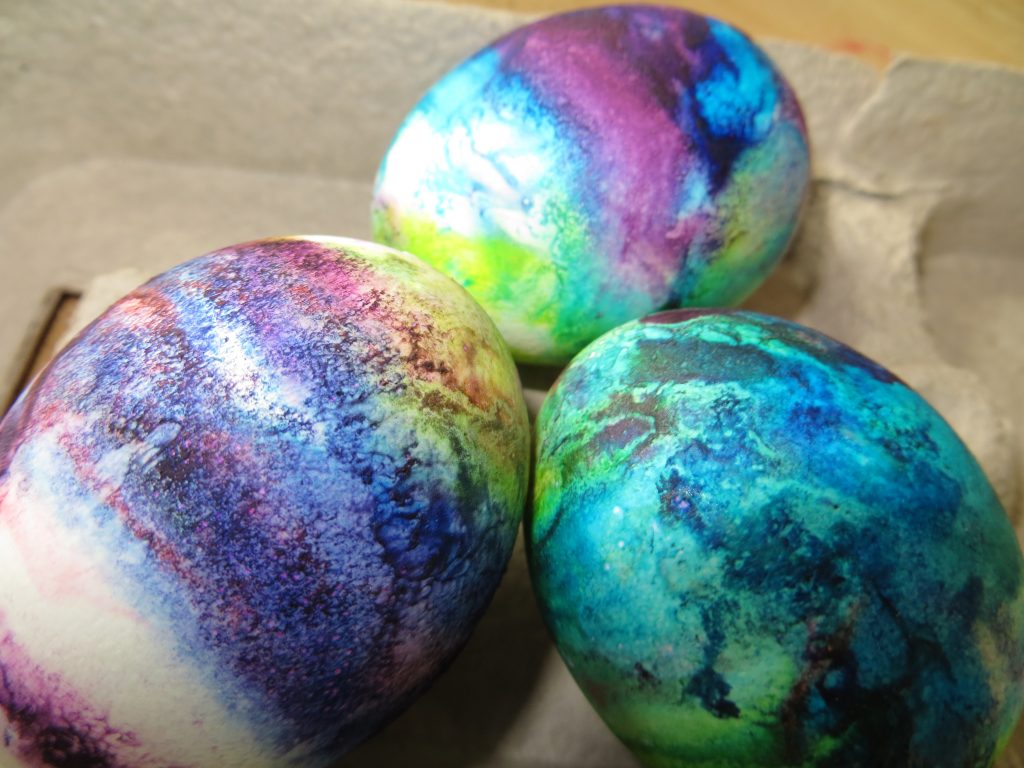
Lemon-Painted Eggs: Dye eggs with cabbage juice and use lemon juice and backing soda to “paint” pink and blue designs on the purple eggs. (Project from STEAM Lab for Kids- Quarry Books)
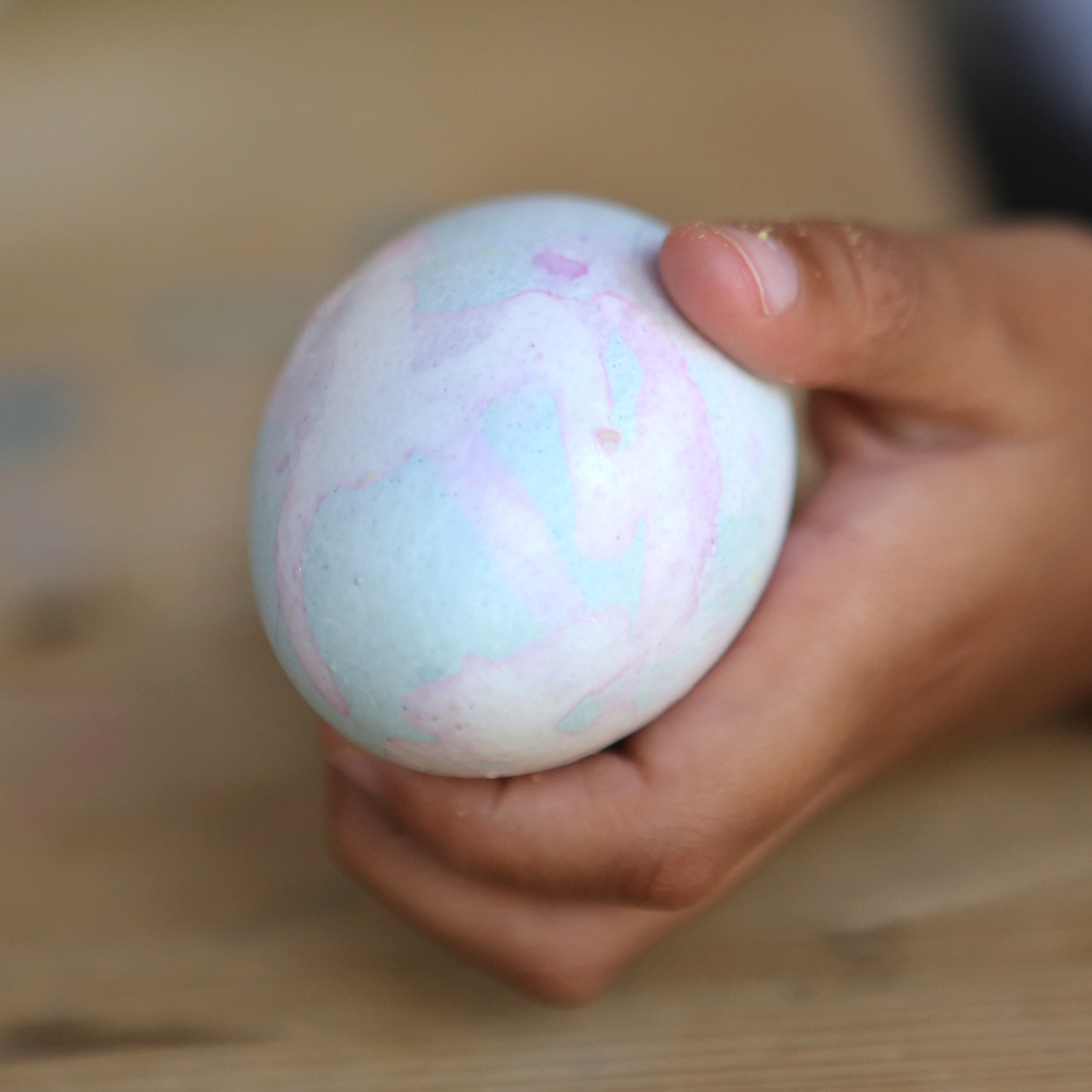
Natural Dyes: Experiment with fruit, coffee, tea, spices, veggies and even onion skins to create beautiful, natural egg dyes.
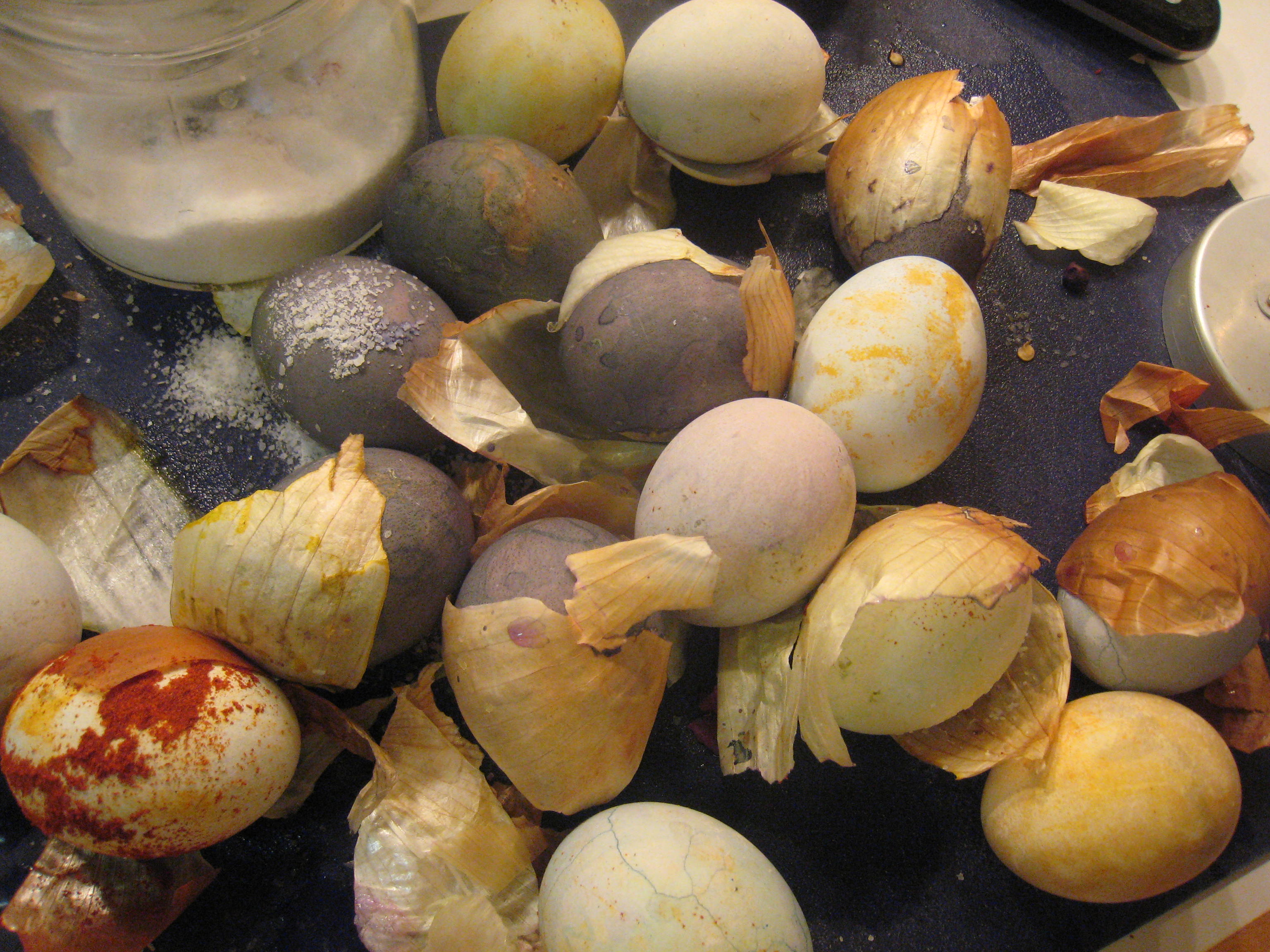
Nail Polish Marbling: This one is obviously inedible, but it’s a fun craft project! You’ll need eggs with the yolks and whites blown out, a container that can be thrown away, nail polish in two or more colors, and water. (Project from STEAM Lab for Kids-Quarry Books)

The science behind the marbling fun: Egg dyes and food coloring require an acidic environment to form bonds. That’s why you add vinegar (also called acetic acid) to water and dye when coloring eggs. Things that are less dense than water, like olive oil and nail polish, float on top of water, allowing you to create designs that can be transferred onto your eggs.
Ecology for Kids
- by KitchenPantryScientist
I’m really excited about my newest book, Ecology for Kids. It’s full of activities perfect for Earth Day, or any day when kids want to get their hands into some fun biology projects that teach them about Earth’s ecosystems. ( Ecology for Kids is available everywhere books are sold.)
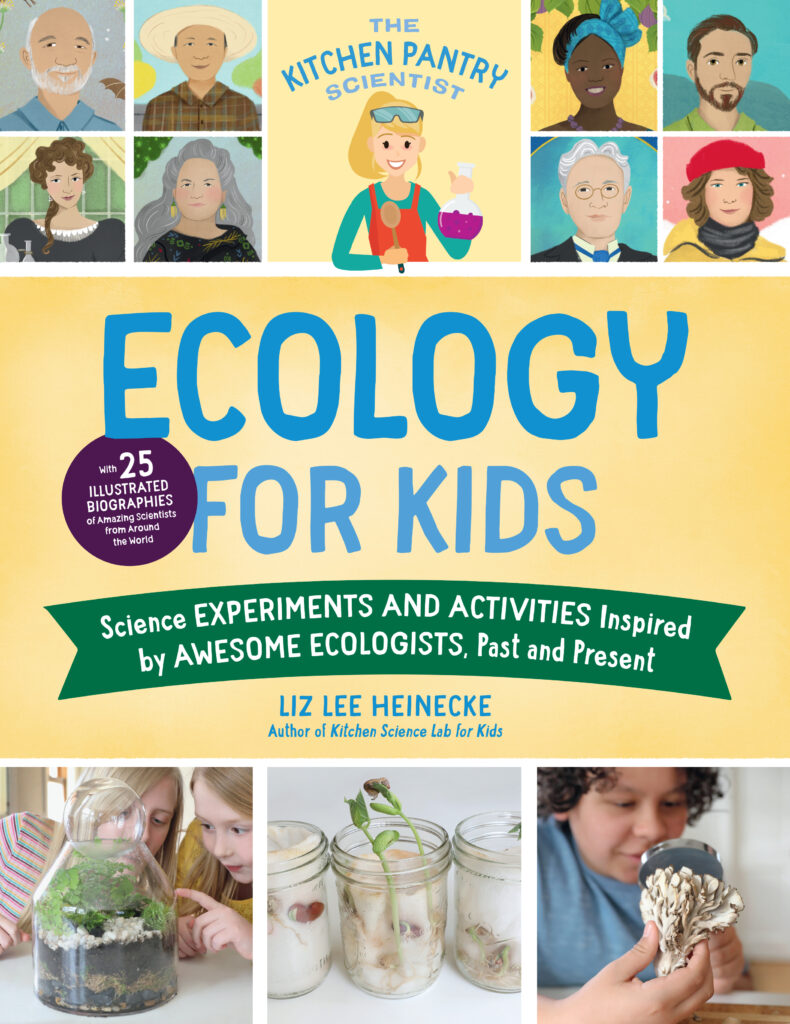
Click here to watch a TV segment where I demonstrate how to make terrariums (rainforest ecosystems) and expanding cacti (desert ecosystems). I also illustrate ocean acidification using color-changing purple cabbage juice, baking soda, vinegar and carbonated water.
The book was illustrated by Kelly Anne Dalton and photographed by Amber Procaccini. Here’s a peek at a few images from the book, which contains biographies of 25 inspiring ecologists, paired with projects that help kids explore the work of those scientists.

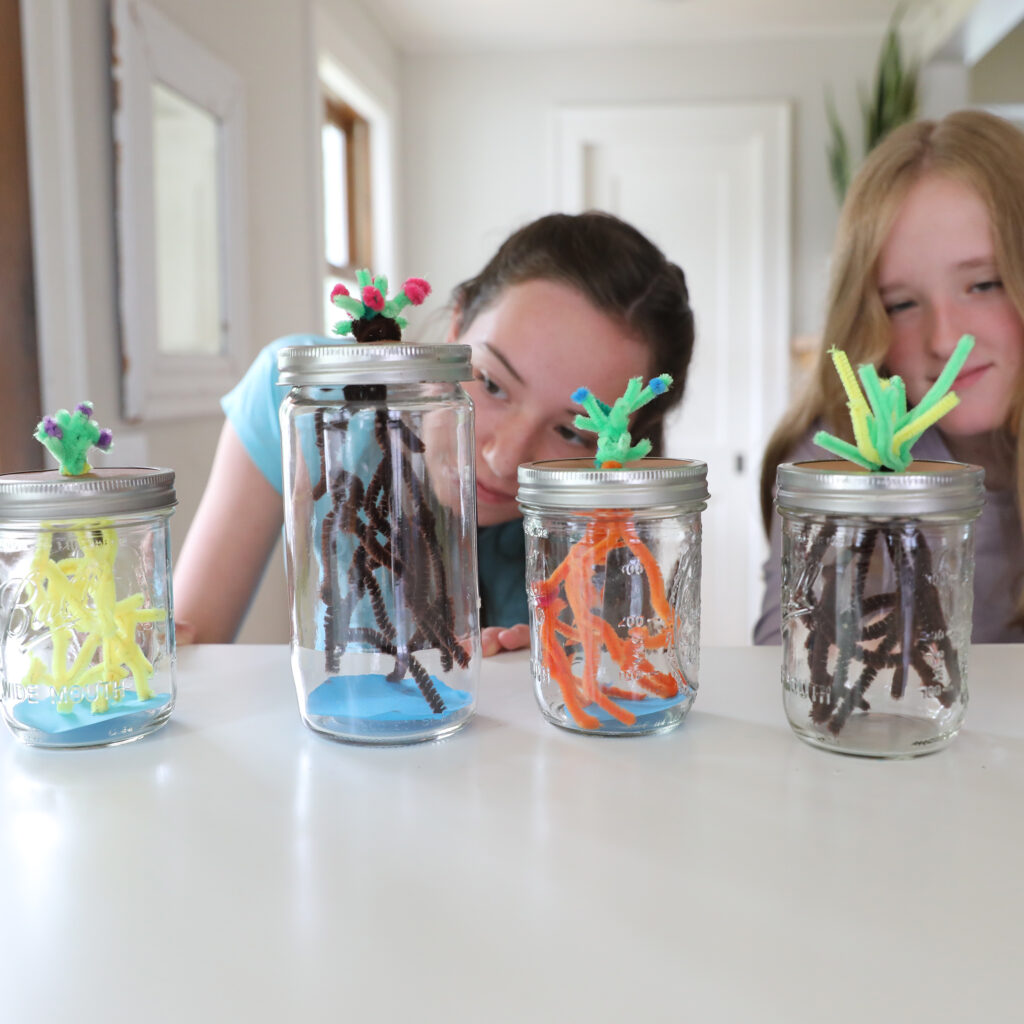
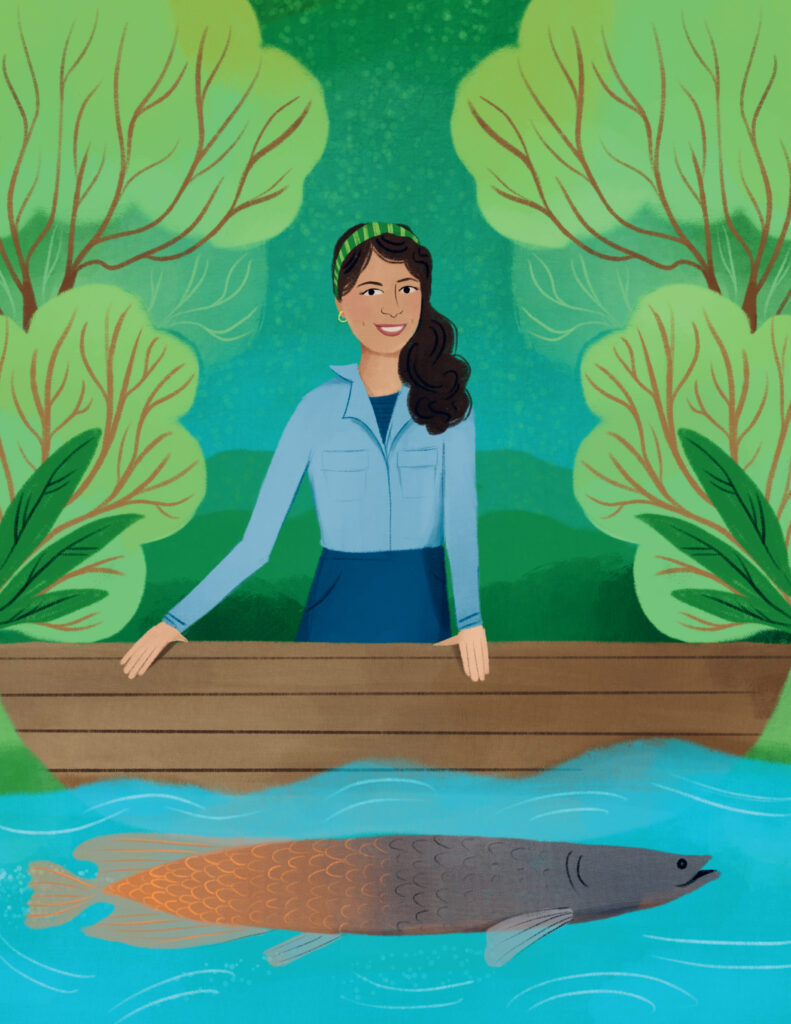

Homemade herb garden and flower seed paper
- by KitchenPantryScientist

This fun project teaches kids about paper science and lets you keep a little bit of summer growing all year long. You can find instructions on the video below, from my Kitchen Pantry Scientist YouTube channel. (Follow me there for loads of fun science projects!)
Summer Science- Biology for Kids
- by KitchenPantryScientist
My latest book is out just in time for summer! Biology for Kids pairs short bios, beautifully illustrated by artist Kelly Anne Dalton, with related science projects, including step-by-step instructions and color photographs. (Available everywhere books are sold.) Amazon link here.
Here’s a TV segment where I demonstrate a few projects from the book:
And you can take a peek inside here:
Two “Buggy” Biology Projects for Kids
- by KitchenPantryScientist
Summer is almost here, and so are the bugs! Here’s a short video segment featuring two inspiring scientists, paired with fun projects from my new book, “Biology for Kids” (available everywhere books are sold.)
New Book! The Kitchen Pantry Scientist Biology for Kids
- by KitchenPantryScientist
So excited for Biology for Kids’ book release on May 11th! Here’s a sneak peek at a few projects from the book. Pre-order now from your favorite bookseller or click here to order.
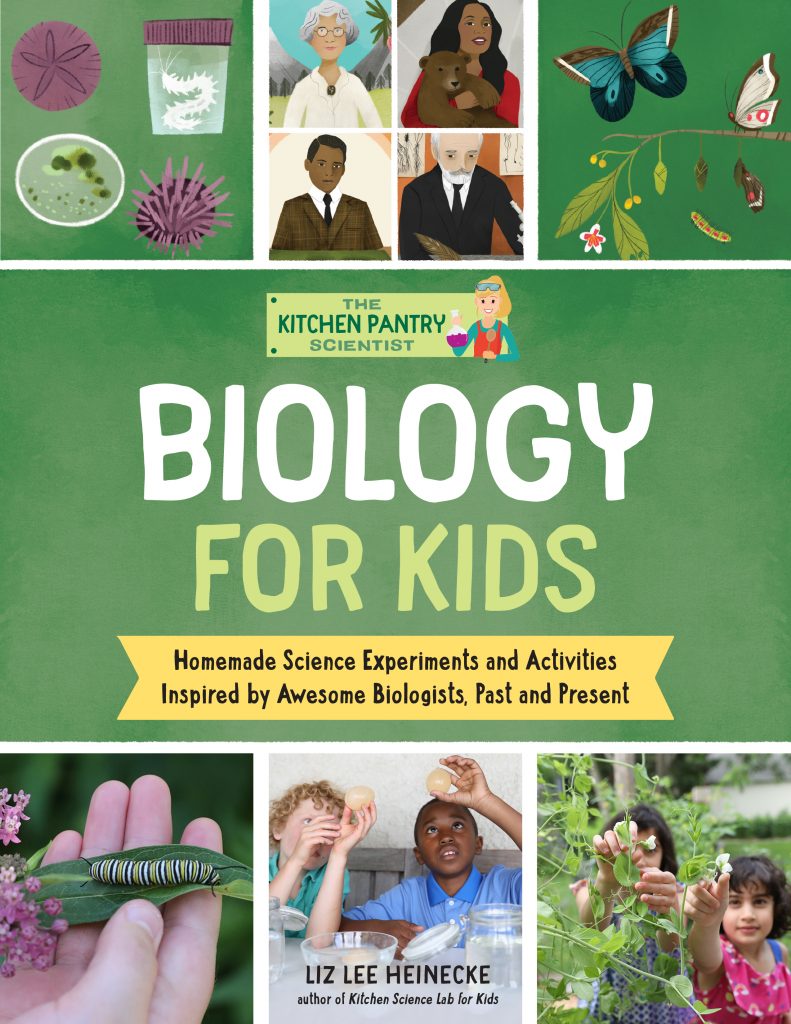
Thanksgiving Food Science: Cranberry Spy Juice
- by KitchenPantryScientist
(Adapted from Kitchen Science Lab for Kids)
Grab an extra bag of cranberries this Thankgiving! Kids can use it to reveal invisible messages they write with baking soda and water.
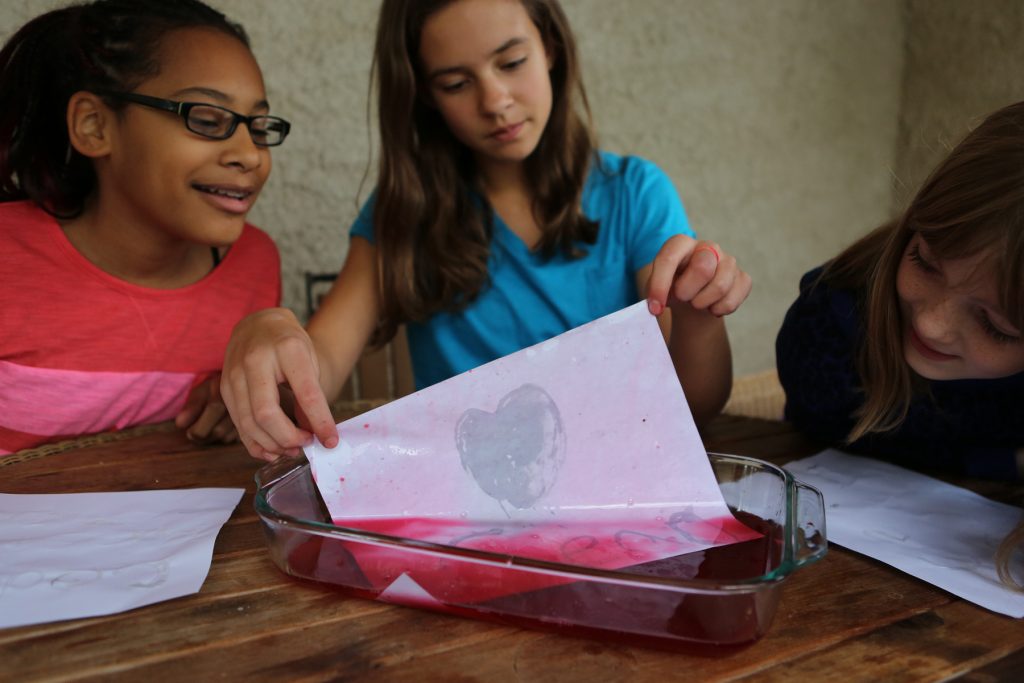
You’ll need:
-around 2 cups of cranberries
-water
-baking soda
-printer paper
-small paintbrush, Q-tip, or lollipop stick
Safety tips and Hints:
Boiling the berries should be done by an adult. Keep the lid on the pan, since the air pockets that make cranberries float can also make them explode. Kids can take over once the juice is cool.
When playing with cranberry juice, aprons or old clothes are a good idea, since it stains!
Directions:
Step 1. Cut a cranberry in half and observe the air pockets that make it float.
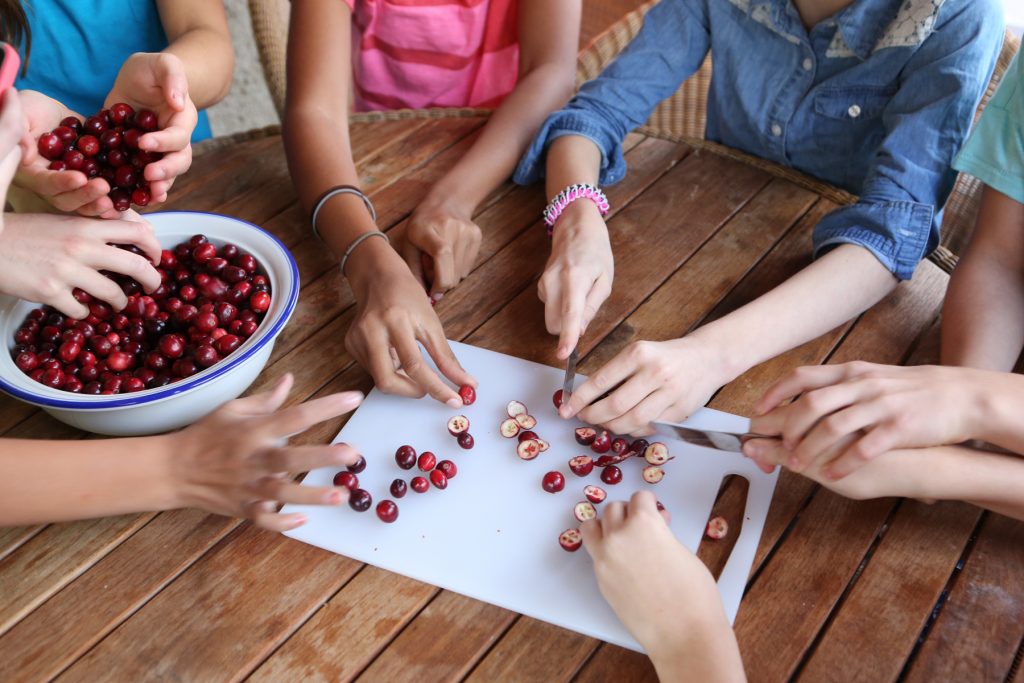
Step 2. Boil the cranberries in about three cups of water for 15 to 20 minutes, covered. Listen for popping sounds as the air in the cranberries heats up and they explode.

Step 3. Crush the cooked berries and push the liquid through a sieve or colander to collect the concentrated cranberry juice.
Step 4. Allow the juice to cool and pour it into a casserole dish or cake pan big enough to hold a piece of paper. If your cranberry juice seems thick and syrupy, add a little water, so that it’s thin enough to soak into paper!
Step 5. Test the paper you want to use by cutting a small piece and soaking it in the cranberry juice. If it stays pink, it will work, but if it turns blue or gray, try some other paper.
Step 6. Add a few teaspoons of baking soda to 1/3 cup of warm water and stir well. Don’t worry if you can still see some baking soda.
Step 7. Using a Q-tip, paintbrush, or a homemade writing tool, use the baking soda solution as ink to write a message on your paper. It may take a little practice, so don’t get frustrated.
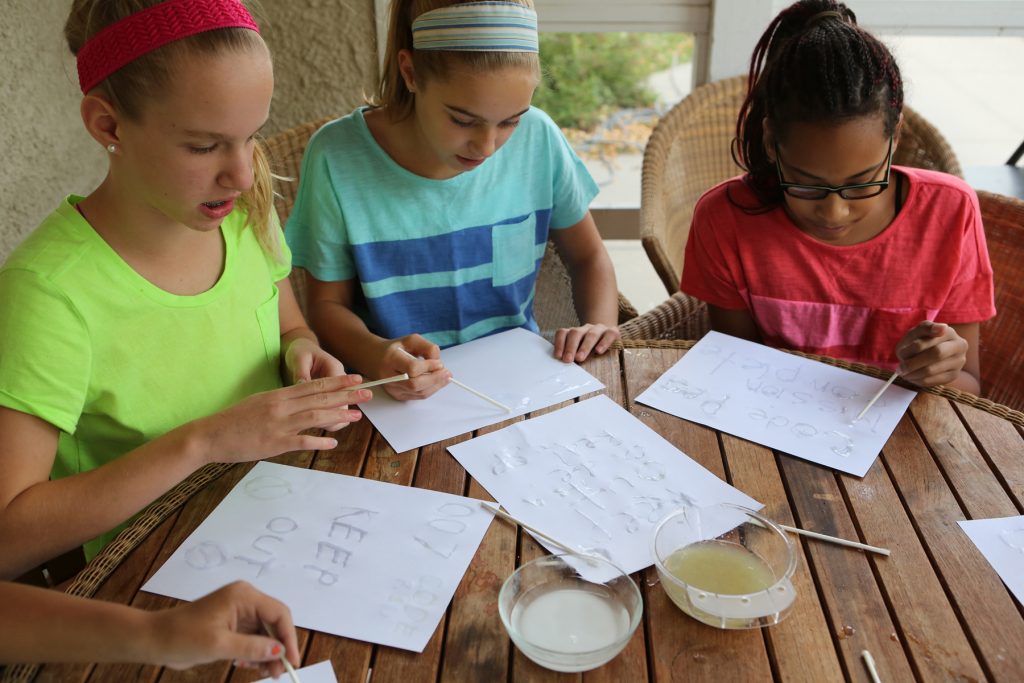
Step 8. Let your message air dry, or speed things up with a blow dryer.
Step 9. To reveal your message, place your paper in the cranberry juice and see what happens!

*What other natural acid/base indicators could you use to do this experiment? What else could you use as ink.
The Science Behind the Fun:
Cranberries contain pigments called anthocyanins (an-tho-SY-a-nins,) which give them their bright color. In nature, these pigments attract birds and other animals to fruit. This is important because animals eat the berries and spread plants seeds from one place to another.
These pigments, called flavanoids, change color when they come in contact with acids and bases. Cranberry juice is very acidic, and the pigment is pink in acids, but when you add it to a base, it turns purple or blue.
Baking soda is a base, so your baking soda message will turn blue when it comes into contact with the pigments in the cranberry juice. Eventually, when enough cranberry juice soaks into the paper, it will dilute the baking soda, turning the pigment back to red and your message will disappear!
There are over 300 kinds of anthocyanins which are found in many fruits and vegetables including blueberries, red cabbage, grapes and blueberries. Scientists believe they may have many health benefits.
Ten Environmental Science Projects for Earth Day 2020
- by KitchenPantryScientist

Wednesday, April 22nd is Earth Day, but there’s no reason we can’t celebrate all month long. Besides hiking and exploring, here are some of our favorite environmental science projects. Just click on the experiment names for directions and photos. You can find more fun outdoor experiments in my books “Kitchen Science Lab for Kids” and “Outdoor Science Lab for Kids“ (Quarry Books.)
Homemade Sweep Nets: Make a sweep net from a pillowcase and a hanger to see what arthropods are hanging out in your favorite outdoor spaces.
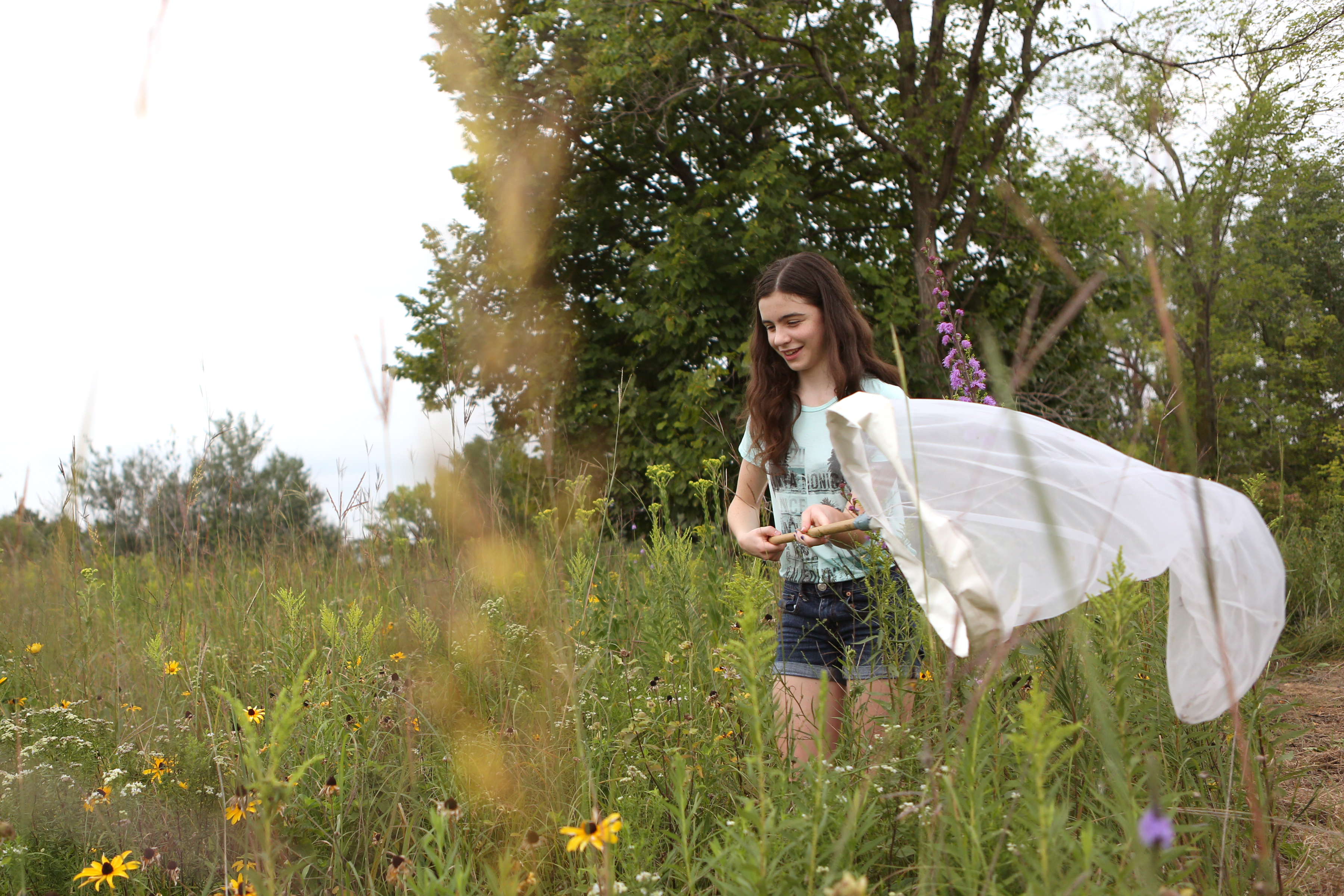
Homemade Sweep Nets from Outdoor Science Lab for Kids (Quarry Books)
Window Sprouts: Plant a bean in a plastic baggie with a damp paper towel to see how plants need only water and air to sprout roots and leaves. Here’s a short video demonstrating how to make a window garden.
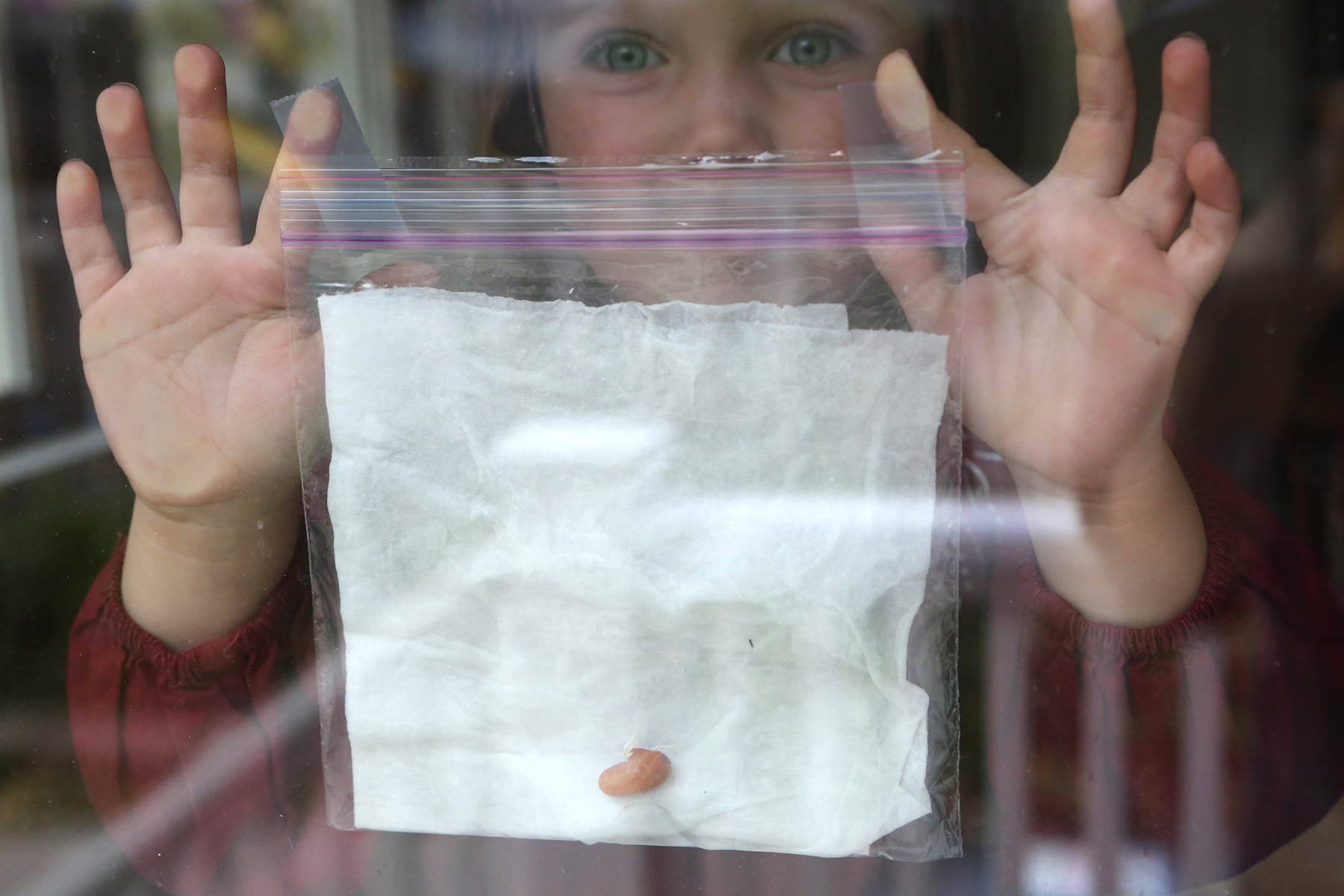
Window Sprouts from Kitchen Science Lab for Kids Quarto Books
Homemade Solar Oven: Using a pizza box, aluminum foil, plastic wrap, and newspaper, you can harness the sun’s energy to cook your own S’mores!
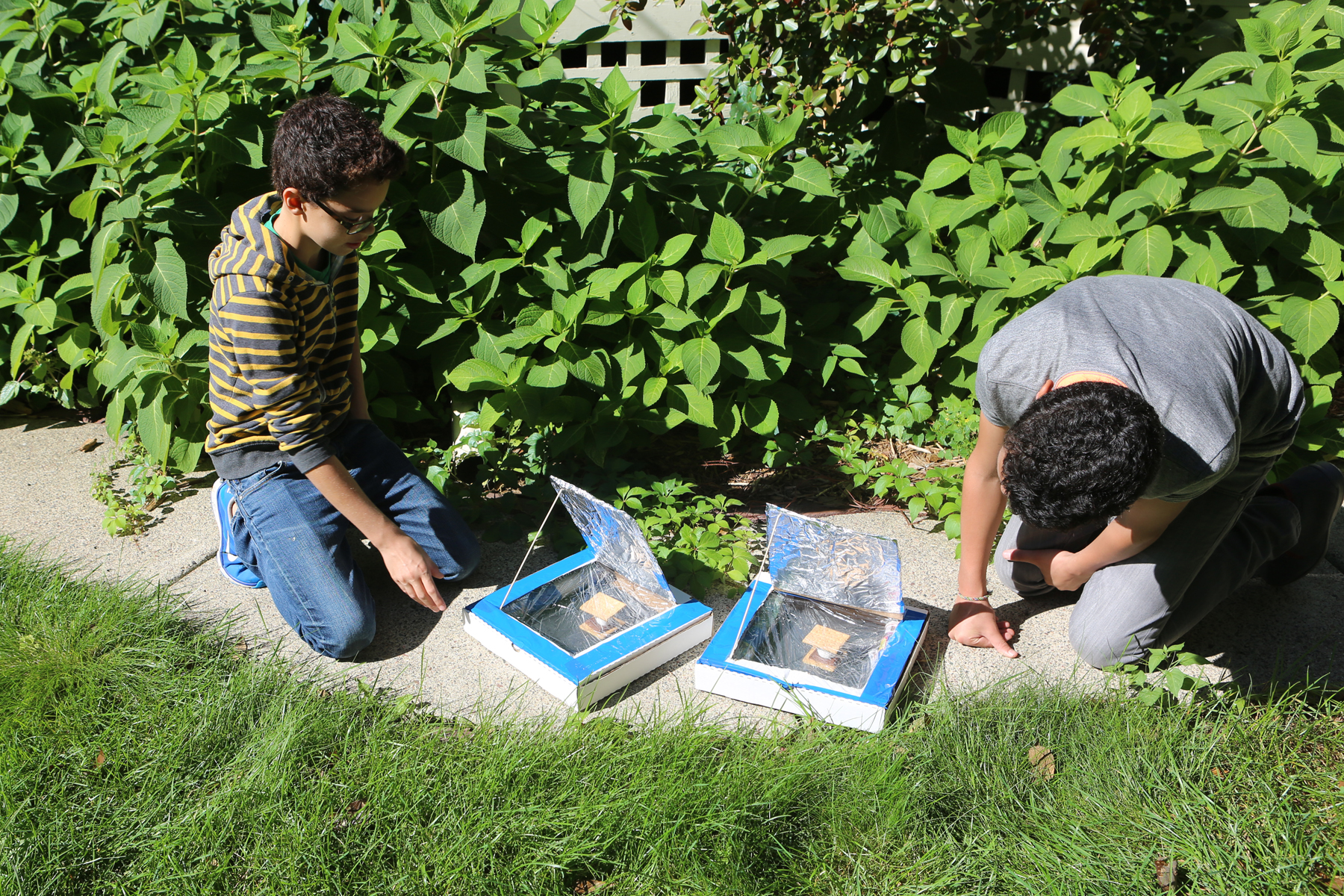
Nature Walk Bracelets: Wrap some duct tape around your wrist (inside out) and take a walk, sticking interesting natural objects like leaves and flowers to your bracelet. It’s a great way to get outdoors and engage with nature. Bring a bag along so you can pick up any trash you find.
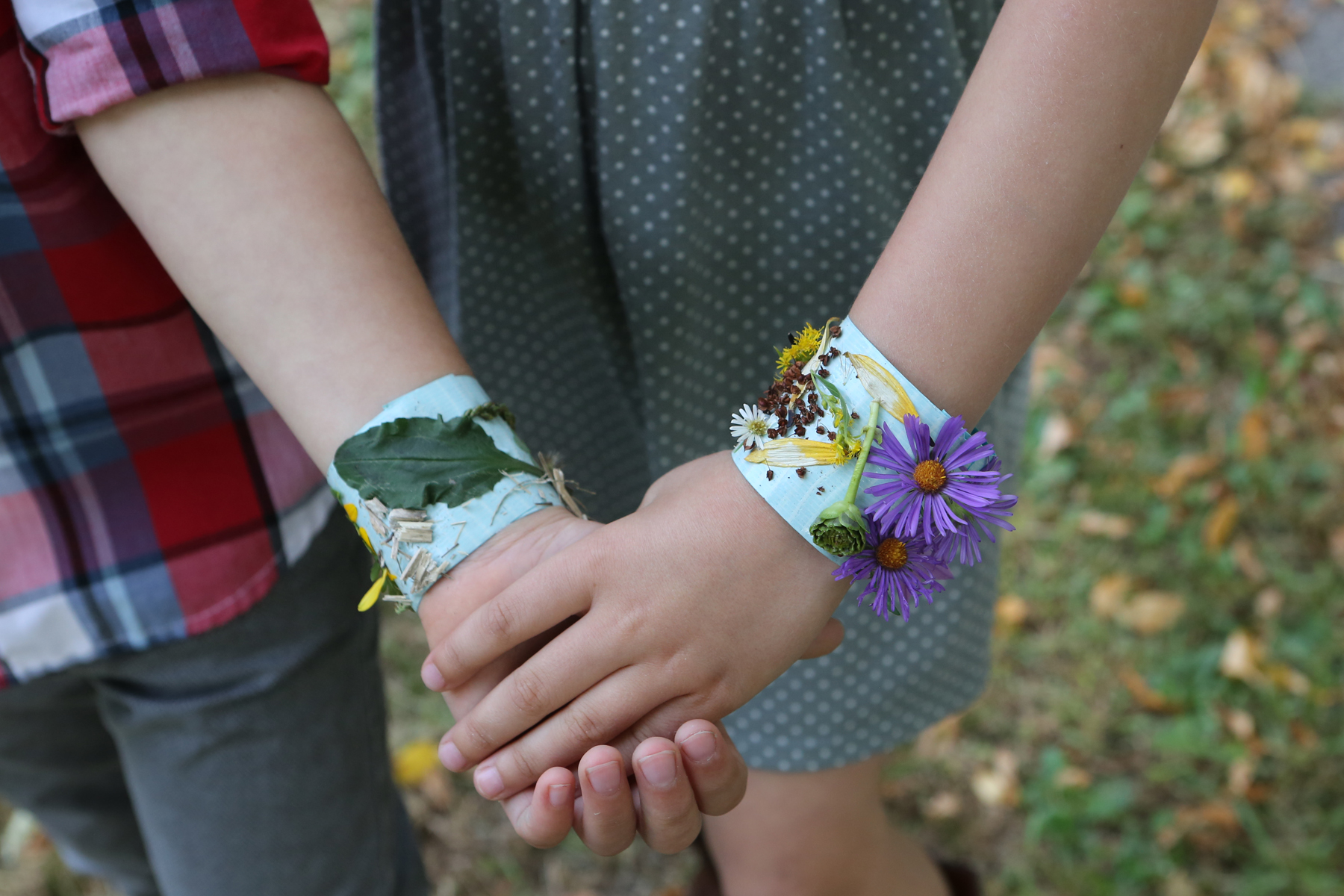
Carbon Dioxide and Ocean Acidity: See for yourself how the carbon dioxide in your own breath can make a water-based solution more acidic. The project illustrates why adding too much carbon dioxide to Earth’s atmosphere can be harmful to ocean creatures.
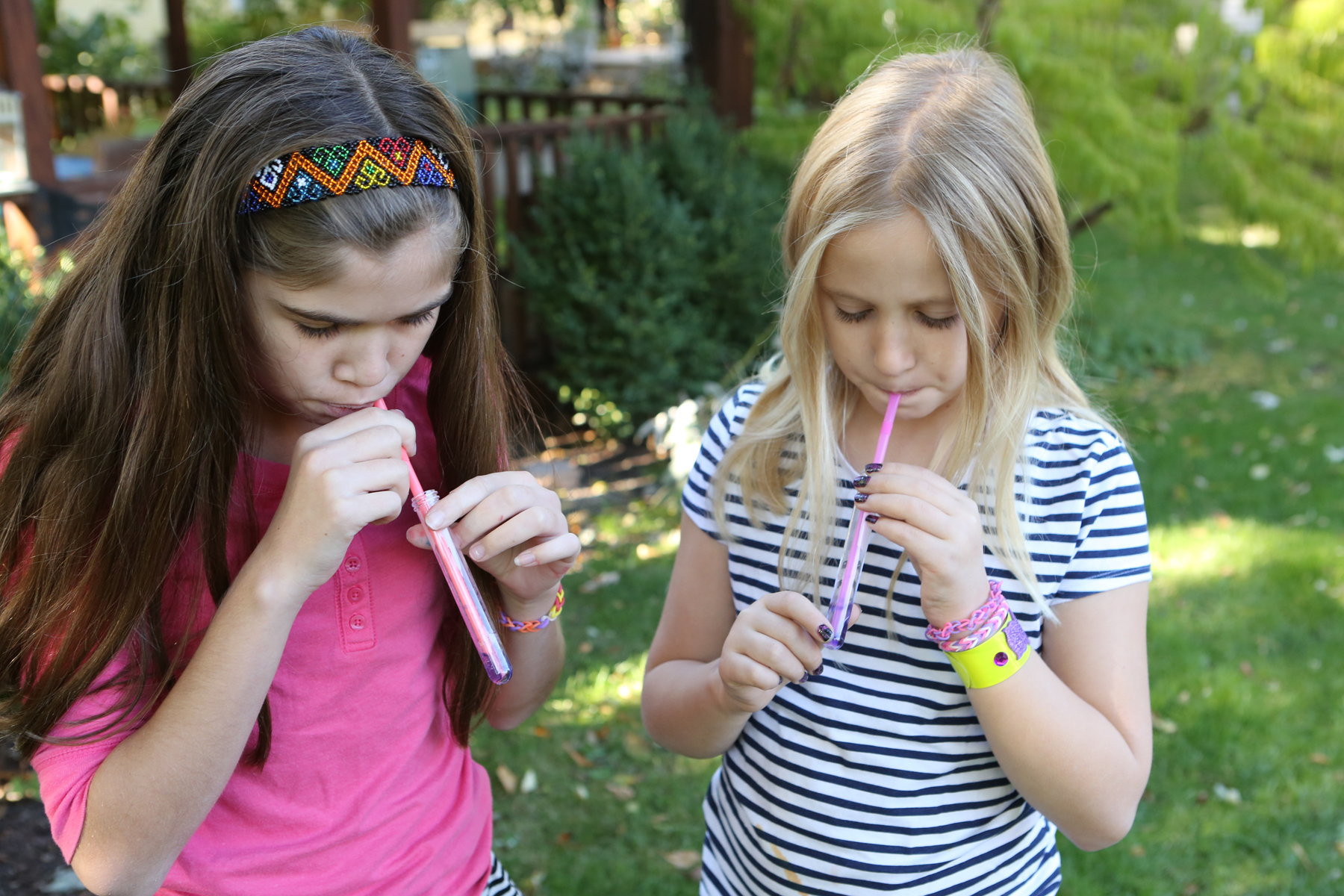
Ocean Acidification Experiment from Kitchen Science Lab for Kids (Quarry Books)
Plant Transpiration: See how trees “sweat” in this survival science experiment.
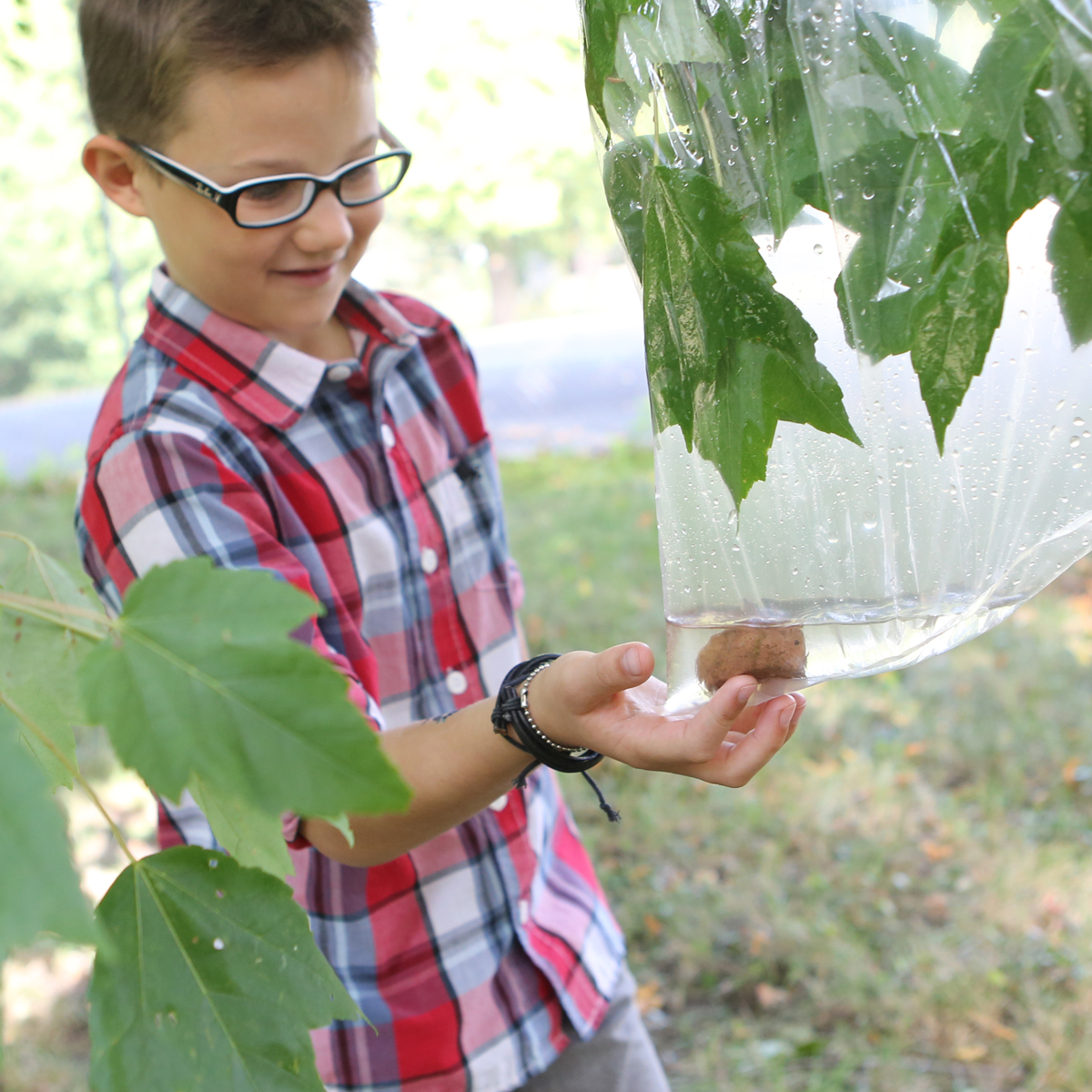
Plant Transpiration experiment from Kitchen Science Lab for Kids
Earthworm Experiment: Do you know what kind of earthworms are living in your back yard?

Earthworm Eruption from Outdoor Science Lab for Kids (Quarry Books 2018)
Composting: Be a composting detective. Bury some things in your back yard (away from power cables) and dig them up in a few months to see how they look. Composting reduces methane gas emissions (a greenhouse gas) from dumps.

Composting Experiment from Outdoor Science Lab for Kids
Diffusion and Osmosis: See for yourself how the chemicals we add to water, put on our streets to melt ice, and spray on our lawns and crops can move into our soil, ground water, rivers, lakes and oceans.
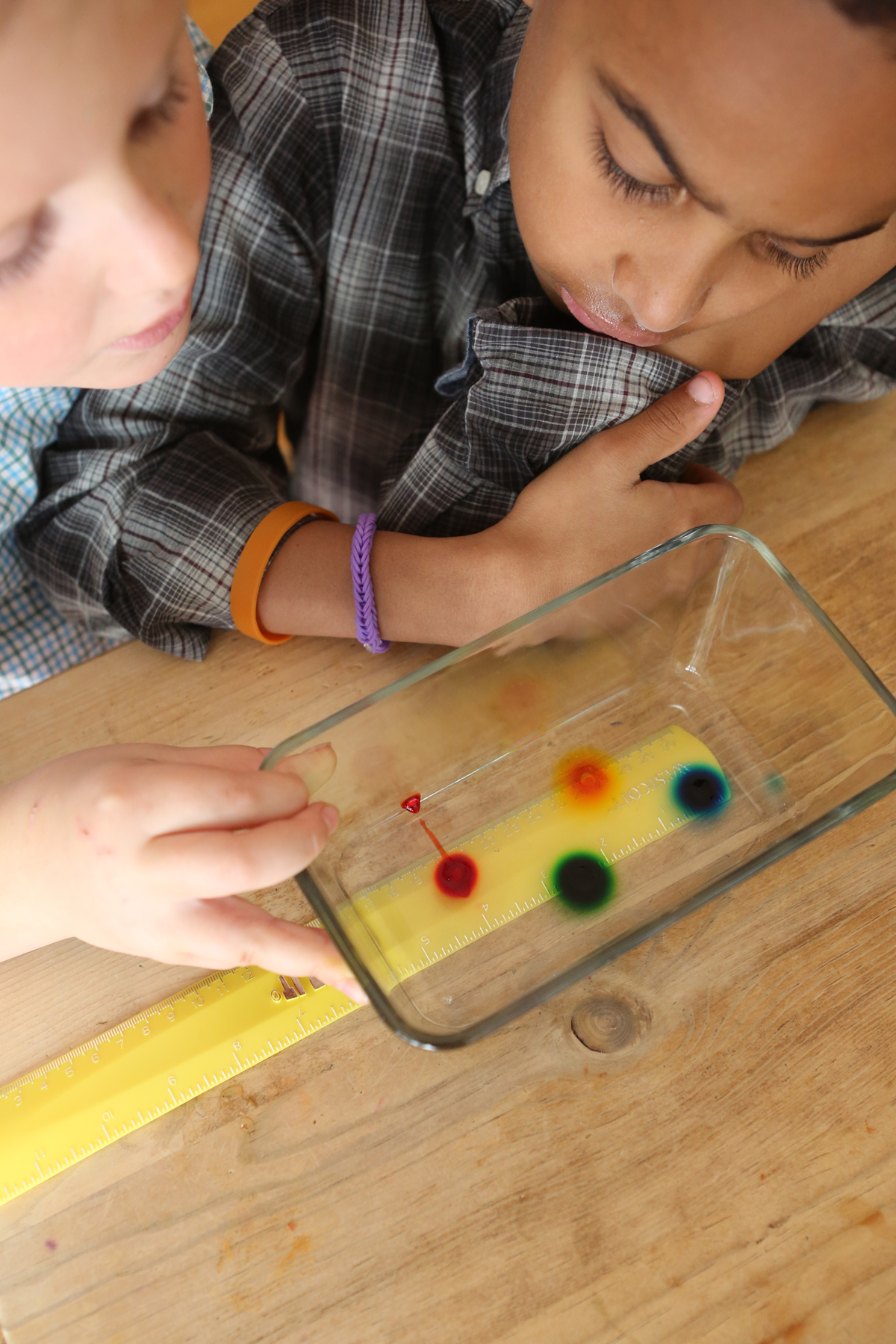
Diffusion Experiment from Kitchen Science Lab for Kids (Quarry Books)
Solar Water Purification: This project illustrates the greenhouse effect and is a fun “survival science” experiment. Requires hot sun and some patience!
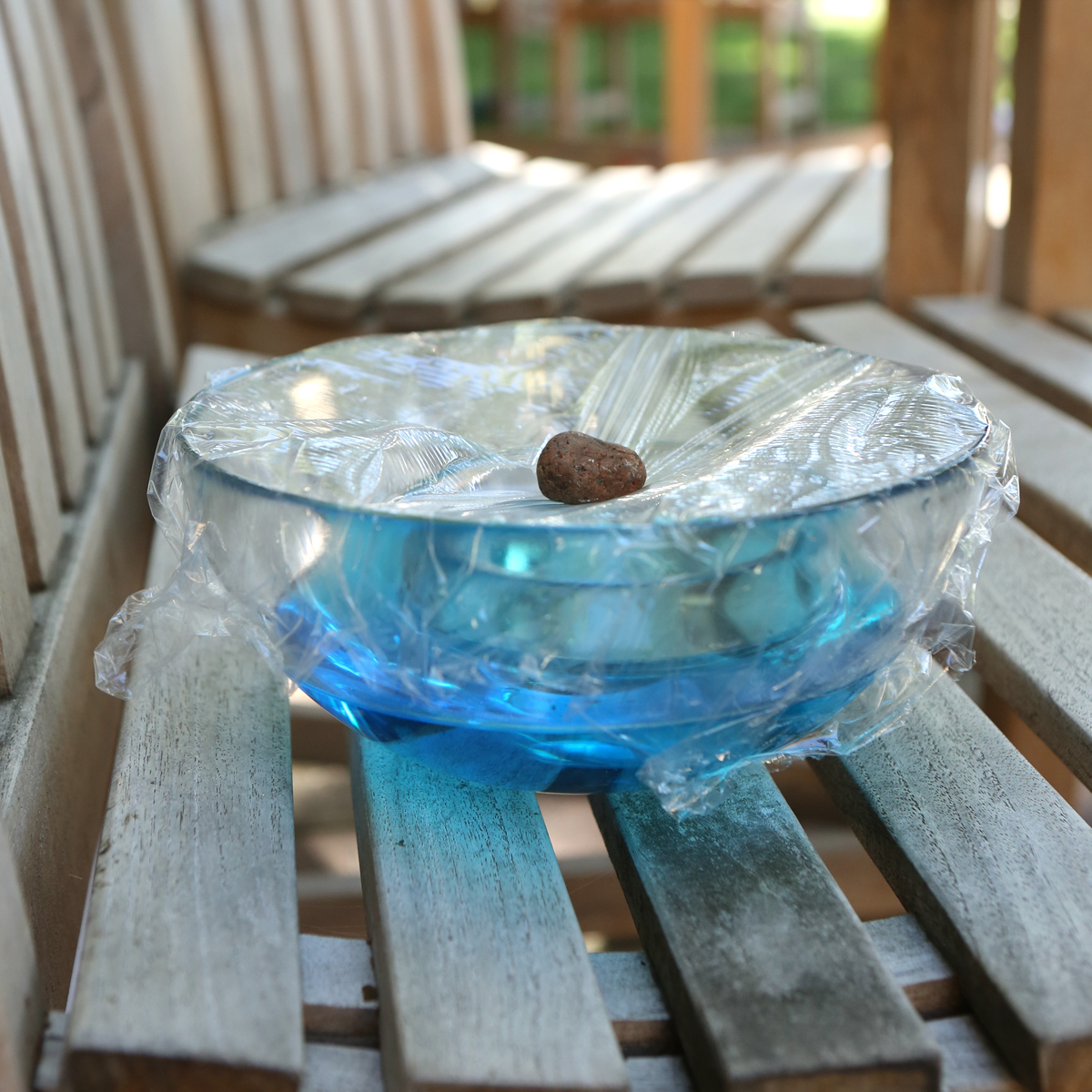
Solar Water Purification from Kitchen Science Lab for Kids
Citizen Science: Don’t forget about all the real environmental research projects you can participate in through Citizen Science programs all around the world!
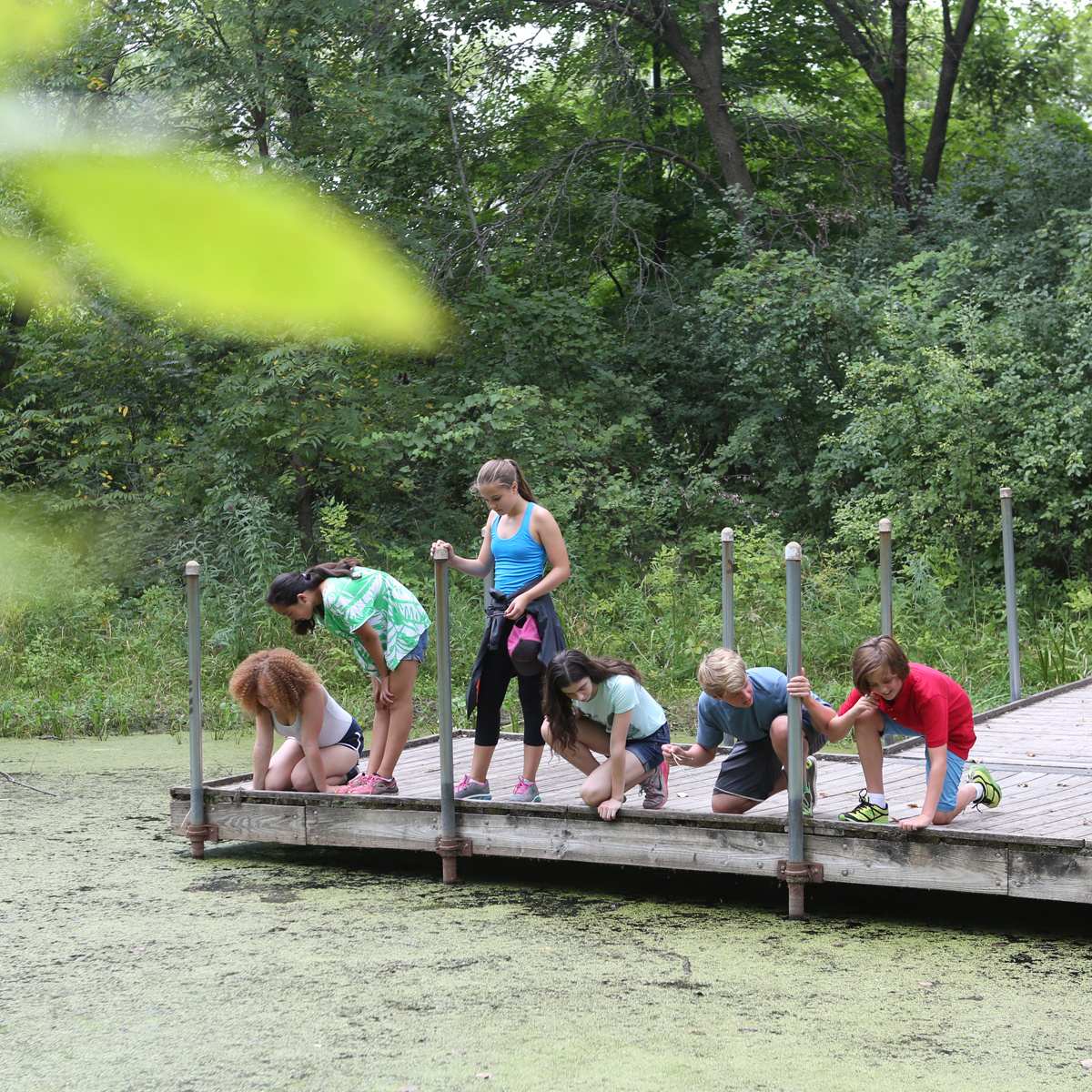
For mores activities and games, check out NASA’s Climate Kids website, to see a kid-friendly diagram of the water cycle, click here, or just get outside and enjoy the beautiful planet that sustains and nurtures us.